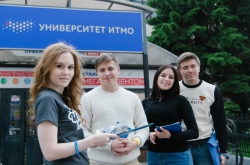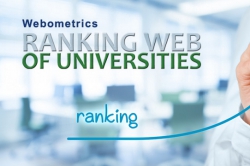The methodology of the ranking is based on four criteria that represent the effectiveness of universities by analyzing their web contents. The indicator called "Presence" takes into account the whole amount of web-pages on the main domain of a university indexed by Google (10% of the total number of points). According to this criterion, ITMO took 958th place. The "Openness" indicator evaluates PDF archives of research publications (10%) — here ITMO came 1179th among over 20,000 universities. According to "Excellence," which evaluates a citation rate of papers presented by universities by using SCImago Lab analyses, ITMO took 1316th place. In comparison with other indicators ITMO had the best result for "Impact," which is the most valuable indicator, about 745th, regardless of the updated methodology.
A ranking of the top-1000 universities made in January included seven Russian higher education institutions. This year Tomsk State University (969th place) joined the list of the best Russian universities: Lomonosov Moscow State University (216th place), St. Petersburg State University (526th place), Novosibirsk State University (548th place), National Research Nuclear University MEPhI (802nd place), Higher School of Economics (HSE) (699th place).
There were a few changes made in this years rankings. First in terms of "impact", it now takes into account each link from a subnetwork rather than all links. As of now, "openness" is based on citation rate of works by the best nine researchers according to Google Scholar. These changes didn’t affect the positions of Russian universities, but changed the ranking of international universities. Moscow State University and Higher School of Economics were affected most of all. For instance, Moscow State University lost 30 positions
Several days ago 4 International Colleges & University (4ICU) published the results of the UniRank, evaluating websites of universities from all over the world. According to the experts, ITMO’s website took 4th place among sites of Russian universities and 654th among 12,358 sites of international universities from more than 200 countries.
The web sources were evaluated by the following criteria: site traffic, amount of links and page depth. This year the "SimilarWeb Global Rank" indicator was added — it counts the amount of unique visitors who used desktops or mobile devices.
According to Stanislav Voitovich, head of the Web Solutions Department, mechanisms used by web-rankings are more transparent than methods used by QS or Times Higher Education. For example, QS uses over 50% of private data.
The main disadvantage of web-rankings is that their methodologies constantly change, and participants have no time to take them into account. To improve their positions universities have to develop their web-portals, update relevant information, pay attention to search mechanisms, improve visibility and indexation of sources and publications, as well as develop repositories of universities.
Webometrics was organized in 2004. These days it is one the most authoritative web-rankings evaluating the activity of educational establishments. Its methodology is based on analyses of the role of universities in the media scene. It also indirectly evaluates achievements in education and research. The main goal of Webometrics is to assist universities in presenting and publishing information about their discoveries.



